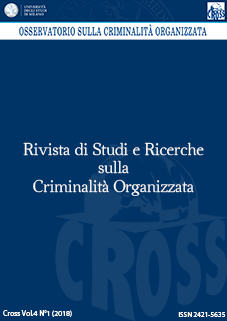Macro structures of corruption: the Lava jato case
DOI:
https://doi.org/10.13130/cross-10250Abstract
In this article it is developed and analyzed a social network model of a criminal organization engaged on corruption in Brazil. The model, based on judicial records published by Brazilian authorities, is referenced herein as the “Lava Jato” network. The applied methodology is based on Social Networks Analysis protocols that allow identifying lawful and unlawful interactions between individuals and companies. The result is a criminal network model in which 906 nodes established 2693 lawful and unlawful interactions. The extensiveness and institutional scope of this network allow revisiting basic concepts that sustain current domestic and multilateral legislative frameworks, such as the concepts of “corruption” and “organized crime”.
Keywords: Corruption, Social Network Analysis, Macro-criminal structures, Lava Jato, Big data







